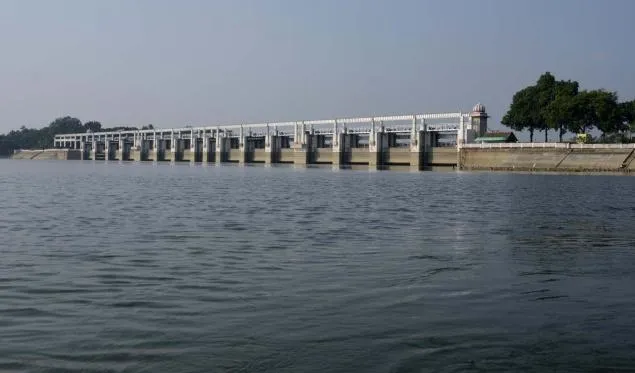Why Did TN Increase Poondi Reservoir Discharge to 4,000 Cusecs?

Synopsis
Key Takeaways
- The Poondi Reservoir discharge has been raised to 4,000 cusecs.
- Residents near the Kosasthalaiyar River should be cautious.
- Authorities are on high alert, monitoring water levels continuously.
- Flood-relief measures are being implemented in anticipation of potential emergencies.
- Community safety is the top priority for officials.
Chennai, Oct 27 (NationPress) Due to ongoing rainfall and the increasing inflow into the Poondi Sathyamoorthy Sagar Reservoir, the Water Resources Department (WRD) has raised the water discharge to 4,000 cusecs effective from 8 a.m. on Monday. This decision comes with a precautionary advisory for residents in low-lying areas along the Kosasthalaiyar River.
Situated in Tiruvallur district, the Poondi reservoir is essential for Chennai's drinking water supply, boasting a full storage capacity of 3,231 million cubic feet (mcft) at a depth of 35 feet.
Officials indicated that persistent rain in recent days and substantial inflow from upstream sources have brought the reservoir close to its maximum capacity.
As per WRD engineers, the current inflow is at 4,070 cusecs, with water coming from various sources, including the Kesavaram Dam, Ilupair Dam, Poondi Inflow Canal, Kandaleru Canal, and the reservoir’s own catchment area.
“To ensure safety, we have escalated the discharge to 4,000 cusecs to stabilize the reservoir and handle additional inflow should the rains persist,” noted a senior WRD official.
The department has also alerted the district administrations and disaster response teams in Tiruvallur and Chennai, urging them to remain on high alert.
Residents in at-risk areas, specifically Thiruninravur, Pullarambakkam, and Poondi, have been warned to exercise caution and avoid approaching riverbanks.
“Field engineers are diligently monitoring water levels, inflow, and outflow. It is crucial for people to keep a safe distance from the Kosasthalaiyar River and report any unusual water activity to local authorities immediately,” added the official.
In addition, the Chennai Corporation and Tiruvallur district administration have begun precautionary measures, such as desilting stormwater drains, checking embankments, and preparing flood-relief centers for potential emergency evacuations.
The WRD stated that further releases from the reservoir will depend on the intensity of rainfall and inflow levels in the coming days.
“Our priority is to ensure the safety of both the reservoir infrastructure and downstream communities,” officials said, highlighting that water levels in the city’s other reservoirs—Chembarambakkam, Red Hills, and Puzhal—are being closely monitored.
aal/rad









